After my grueling and lucky win against Ryan's French Defense in round three, I reset my clock, turned my board around, and put my mind into gear for the Black side of the French. Nikolay Bulakh's rating is provisional, based on nineteen games. He was 1479 (P11) going into the Fall Championship, and came out 1729 (P16). He swept Quad B in the Turkey Quads (I was second in Quad A), increasing his provisional rating to 1782. He had ambitious plans going into Christmas Chaos, a game/60 dual rated event, but lost in an early round. Even so, a win in this game would put him and I in a tie for first, likely with others.
When I arrived at club, he was ready, and confident that we would play in round four. We played some skittles to warm up and argue opening theory.
Bulakh,N (1782) - Stripes,J (1820) [C01]
Christmas Chaos, Spokane 2009
1.e4 e6 2.d4 d5 3.exd5
3.Nc3 remains the most popular, and according to my selected database of master games since 2000, results in the highest performance rating. Slightly lower in performance, but higher in winning percentage is the Tarrasch, 3.Nd2.
A lot of French players dread the Exchange Variation because they like to win and it seems drawish on first glance. John Watson disputes this assessment. He shows that Black easily creates imbalances that can lead to victory for the second player, and dispense a little venom for aficionados of the White side.
It is not a particularly imaginative line. ... Although the Exchange Variation appeals to players who are trying to draw against stronger players, allowing equality on the third move as White may not be the way to go about that. Be aware that it's a strategy that has failed miserably throughout the years.3... exd5 4.Bd3 Bd6
John Watson, Play the French, 3rd ed., 70
Watson recommends 4...Nc6 to break the symmetry immediately.
5.Nf3 Ne7 6.0–0 Nbc6 7.c3 Bg4
We have transposed into the line favored by Watson.
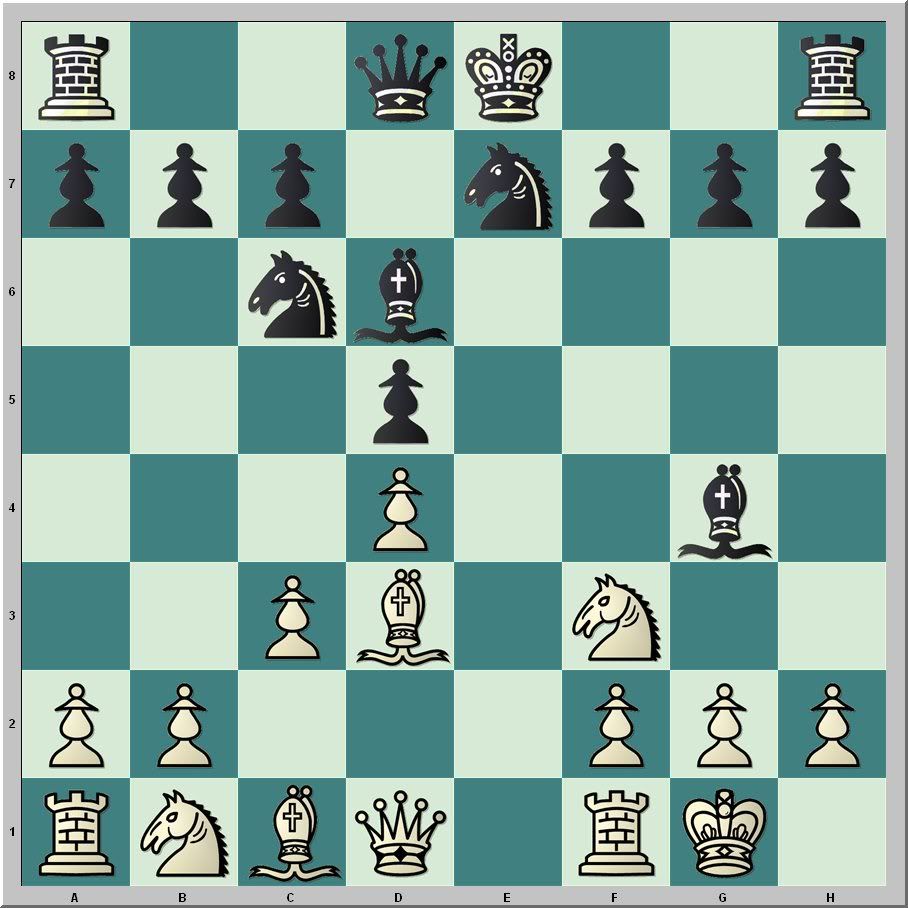
8.Nbd2
8.Re1 is more accurate.
8...Qd7 9.h3!?
Watson refers readers to analysis by Lev Psakhis, who calls this move inaccurate.
9...Bh5 10.Re1 0–0–0 11.Qa4
I thought during the game that Nf1 was part of the purpose behind Re1, and that's the move in the line from Psakhis given by Watson.
11.b4 seems warranted. Indeed, my worst experiences with the French have been losses to this queenside pawn storm backed by White's heavy pieces.

11...g5! 12.g4?
My opponent burned eight minutes off the clock to find this error. Counterplay is a better plan: 12.b4!
12... Bxg4
12...Bg6 is accurate, safe, and gives Black the upper hand. But, attacking is fun while defending accurately often takes time. In a game/60, time is critical.
13.hxg4 Qxg4+ 14.Kf1
Nikolay had offered a draw at move nine, and now while thinking muttered draw, draw, draw, ...
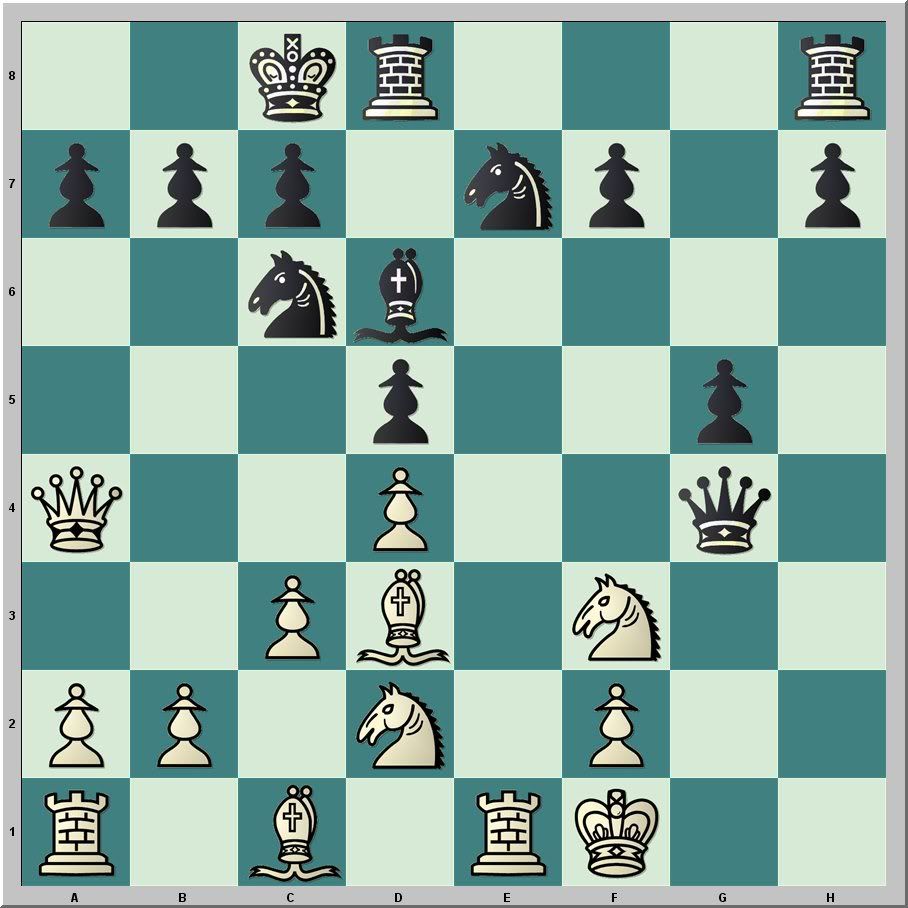
14...Rde8
Did I consider 14...Ng6--a better move? No, I wanted to keep the king on his wing. Later in the game I would change strategies and try to steer him away.
15.Ke2 Nf5+
My engine tells me that carbon lifeforms fail to comprehend this game of ours, and that 15...Bf4 presents White with more difficulties. Nikolay's clock has thirty-one minutes remaining to my forty-three.
16.Kd1 Rxe1+ 17.Kxe1 Qh3
For some reason, I failed to correctly assess my advantage after 17...Nh4! 18.Be2 Re8. Perhaps I thought the rook should remain on the h-file to support my future queen.
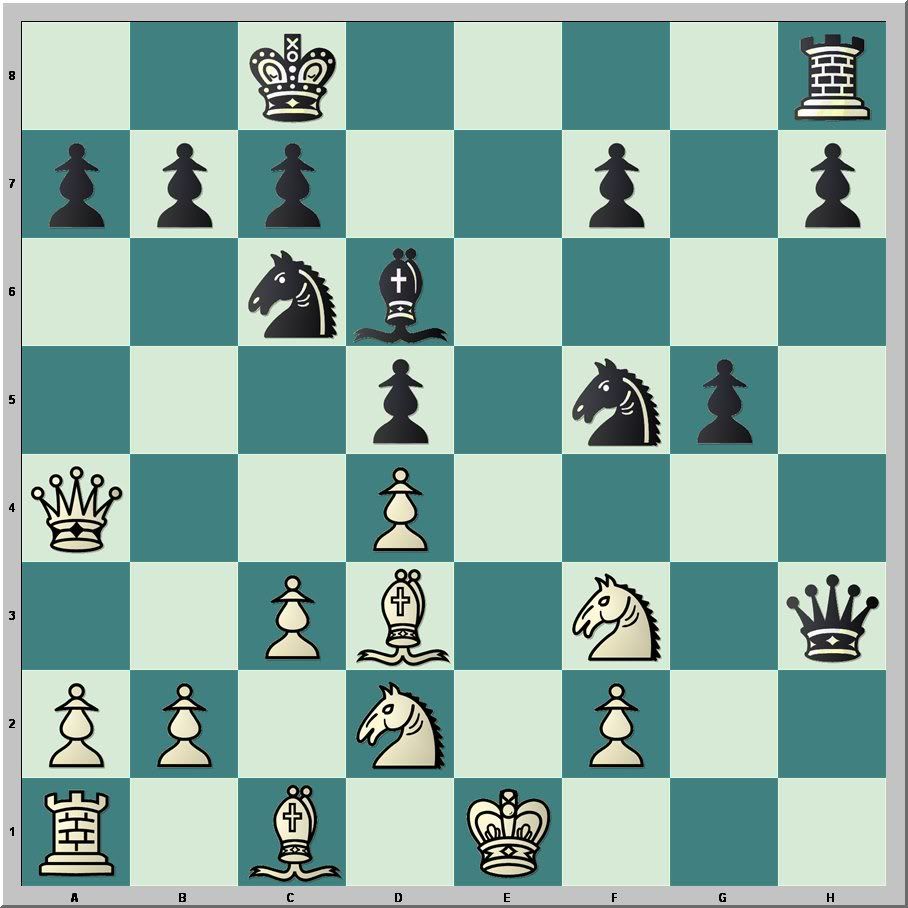
18.Bxf5+ Qxf5 19.Kd1 g4 20.Ne5 Bxe5 21.dxe5

21...Qxf2?
Up until this point, I have had the advantage, thanks in no small part to my opponent's lack of vigor in attacking on the queenside. Now I let his queen create problems, and the advantage shifts to his side.
22.Qxg4+ Kb8 23.Qe2 Qg1+ 24.Qf1 Qg4+
I could offer a draw. However, my opponent has twelve minutes left to my twenty-eight. Moreover, I think that I can stitch my pawns back together before they start their promotion run.
25.Qf3 h5 26.Kc2 Qg6+ 27.Qd3 Nxe5
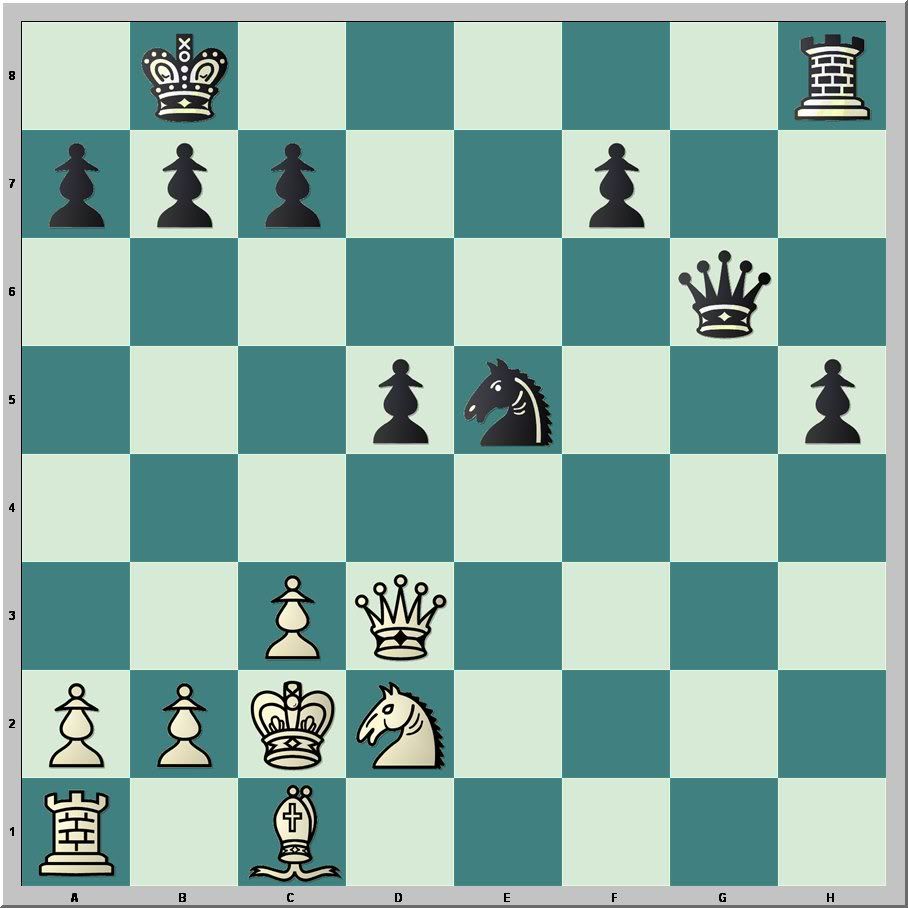
28.Qxg6
"Box," Yasser Seiriwan would say, referring to Informant code for the only move. Alas, White has restored equality. Black has compensation for the material, but no real advantage. On the other hand, White has five minutes; Black has twenty-five. Forget tactics training; learn to tell time.
28... fxg6 29.Nb3 h4 30.Bf4 Nf7 31.Rh1
White completes his development!
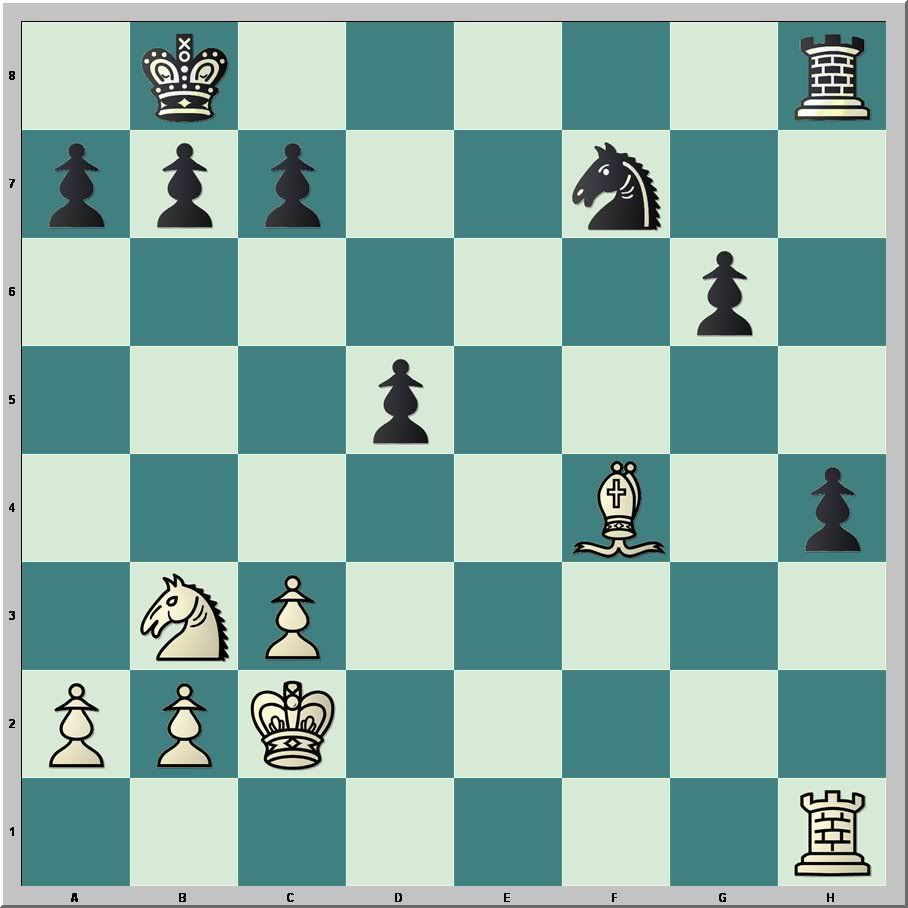
31...g5 32.Be3 g4 33.Nd2 Nd6 34.Bd4 Rh7 35.Nf1 Nf5 36.Ne3
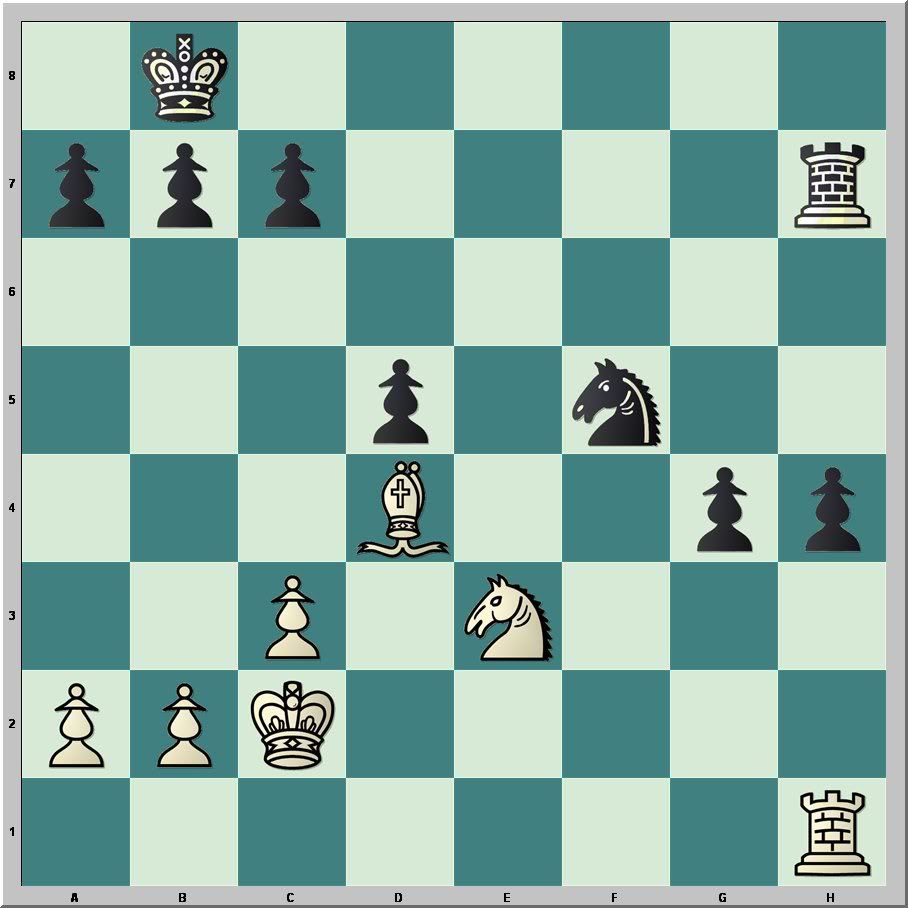
36...Nxd4+
The knight is a more useful piece according to the massive calculating capabilities of the chess engine. But, reasoning that bishops are more useful when pawns exist on both wings, and that the cleric likes working with the rook, I opted to remove the long-range piece from my opponent's arsenal. He has two minutes left on the clock; I have nineteen. I should have mentioned earlier that we are using my analog clock--no time delay.
37.cxd4 g3 38.Rh3 c6 39.Ng2
39.Kd3 activates White's second most powerful piece.
39...Rf7 40.Kd3 Rf3+ 41.Ne3

41...Rf2
41...g2! and the queen should take care of things nicely. I reasoned, incorrectly, that White might set up a fortress with the knight and rook that a queen would have trouble breaking down as all the action would take place on one half of the board. However, my queen would have been waiting--and picking the last pawns from her teeth--when the knight and rook arrived. Sometimes concrete analysis is necessary, especially when I have fifteen minutes to my opponent's one.
42.Rxh4 Rxb2 43.Rh8+ Kc7 44.Rg8 Rxa2 45.Rxg3 a5 46.Kc3 b5 47.Kb3 Rf2 48.Rg7+ Kb6
Black has a real advantage. Although it is not overwhelming, a little technique should carry the day. Decisive, however, is Black's fourteen minutes to seconds remaining for White. The blunders during the finale can be attributed to the time White expended early on attempting to prove the righteousness of an inferior opening line.
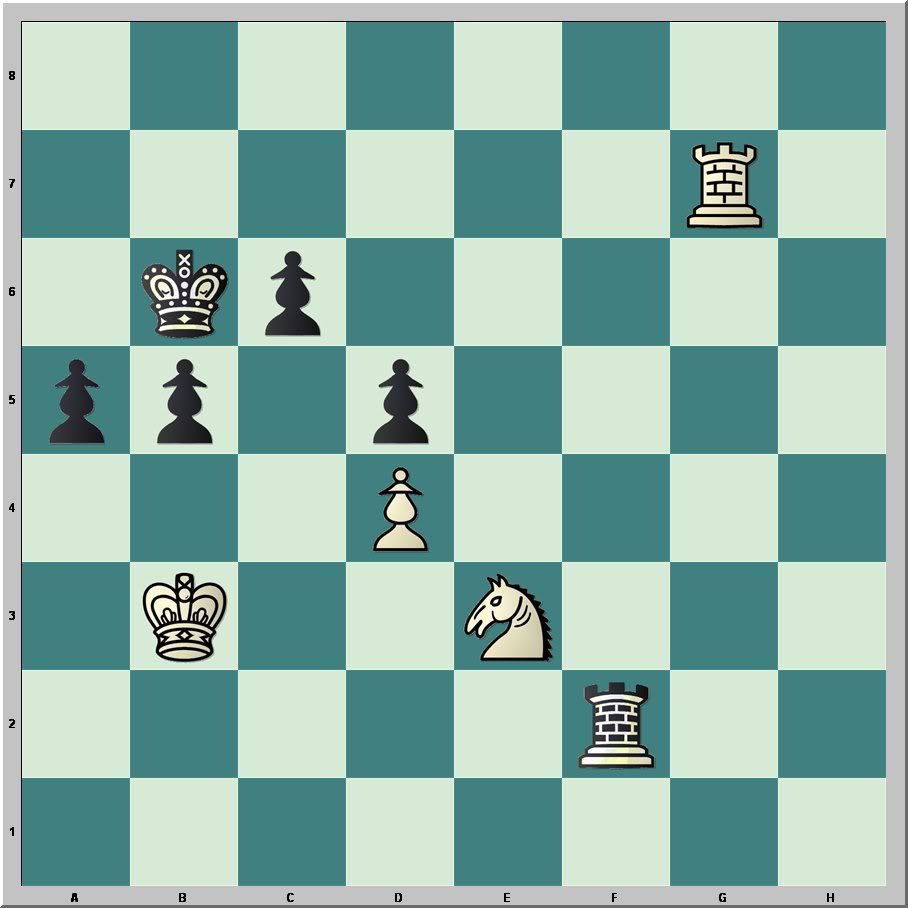
49.Rg3 b4 50.Ka4 Rd2 51.Rg4 Rd3 52.Nc2 b3 53.Rg6 bxc2 54.Rxc6+ 0–1














James, it's not very nice to say that I cannot tell time, you were the one who was dumb enough to trade his good bishop for two pawns, had it been a G/60 with 5sec delay I would have easily crushed you.
ReplyDeleteI'm sorry. Will you forgive me? Perhaps I should have said, "forget tactics, buy a time delay clock".
ReplyDelete"had it been a G/60 with 5sec delay I would have easily crushed you."
ReplyDeletelmao.
I think the time is a big factor, and agree with James about the realities of G/60. Heck, the guy walking down the street could probably beat me G/60 with or without the delay, but if that's all there was, then I would still play and be forced to move quickly, not making best moves by any stretch.
In any case, I am leery of analog clocks and will play markedly different because it freaks me out when it gets to the last 5 minutes (whereas digital "feels" like forever because one can see the seconds).
I didn't like BxNf5, would probably look at anything to develop there, even Nxg.
21...Nxe, followed by Nd3 is already looking devastating.
In a slow game, I probably play Bg6 after g4, since Black has an advantage either way probably, but G/60 I admire James courage in knowing that it takes a lot of time to defend and was a very practical decision. May have been the strongest move either way.
I probably would have played Bh2 and Rg1, if that's possible (instead of Bd4), and later in the game tried to bail out into a rook endgame a pawn down (for White). Possibly White can hold on, but it will be tough, especially low on time.